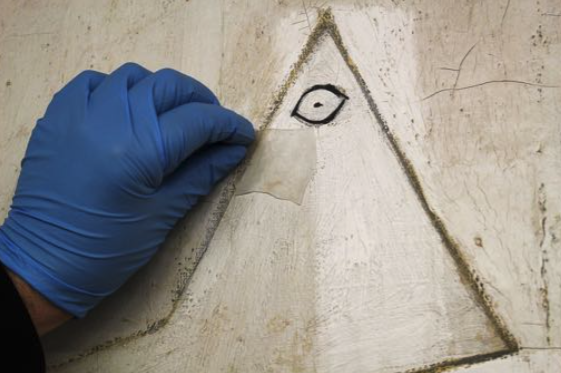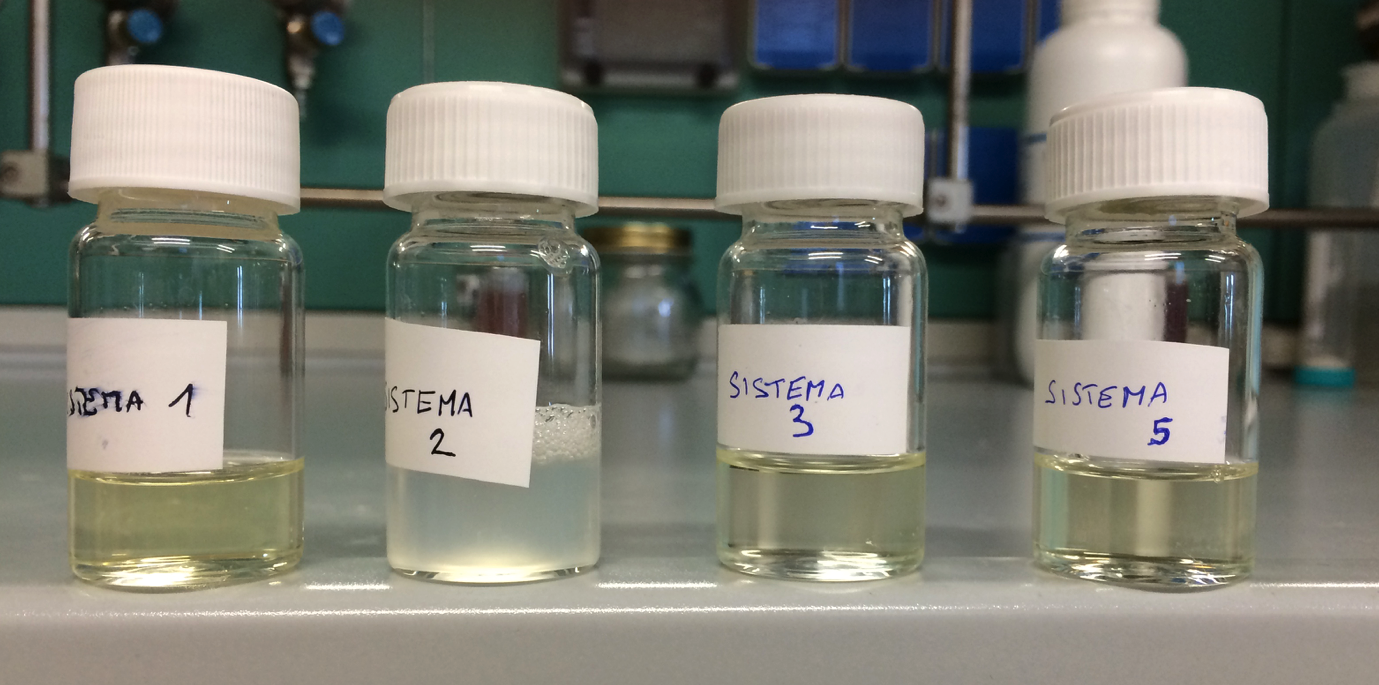WP2 - Environmentally friendly innovative cleaning fluids
Conservative challenge
Many contemporary art surfaces, particularly those made of modern paints, such as acrylic paints, are exceptionally difficult to clean. In fact they possess a high tendency to incorporate dust and grime, while being very sensitive to the action of both organic solvents and water, i.e., the most used liquids for the cleaning of works of art. On the other hand, a recent survey of the condition of plastic art objects concluded that 75% of them require cleaning. Also, the removal of pressure sensitive tapes and adhesive residues is equally difficult. To address these issues, it is important to find a solution that ensures safe and controlled removal with no modification of the artifact and, no residues. Finally, the removal of unwanted contemporary materials from artistic surfaces is also necessary when outdoor murals (street art), sculptures, and monuments are vandalized with graffiti. The selective removal of the unwanted overpaints is particularly demanding whenever acrylic, vinyl, and alkyd colors were used.
Thus, one of the main aims of this WP was the development of novel systems with enhanced or new properties specifically designed to address these challenges. Among the selected ways to do that, one of the most interesting was to design, formulate and test nanostructured residue-free cleaning fluids, through the use of self-degrading surfactants.

Formulations
- 12 nanostructured fluids: Innovative cleavable surfactants were synthesized, which represent a new class of spontaneously degradable amphiphiles. Basing on these chemicals, and some low toxicity solvents, about 12 environmentally friendly nanostructured fluids were developed for the removal of unwanted materials from artistic surfaces. Some of these nanostructered fluids are already available on the market to end-users.

Innovation
These aqueous cleaning systems are particularly effective in the removal of organic unwanted materials, without redeposition into the pores of artwork substrate. They grant performances not achievable with traditional solvent cleaning, as their action is more controlled, selective, and safe. In nanostructured cleaning fluids (i.e., water-in-oil microemulsions, micellar solutions) organic solvents content is minimized, thus reducing their environmental impact and increasing the operators’ safety. With respect to previously developed formulations, the systems proposed in NANORESTART include nonionic, cleavable surfactants and mild surfactants that are biodegradable. The solvents included in the liquids are all “green”, low-toxicity solvents, with different polarities and good solving power towards different kinds of substances. Therefore, their application is virtually residue-free, while their cleaning effectiveness is increased when compared to previous formulations. In fact, these systems represented a significant step forward for the field of cleaning of works of art.
How do they work?
These water-based formulations allow the removal of soil, aged varnishes/adhesives, and grime from the surface of works of art. Being water-based, they are safer to operators and the environment than traditional solvents used in the restoration practice. Their excellent cleaning properties are due to the combined and sinergic action of organic solvents and surfactants. Microemulsions induce the swelling and detachment of unwanted organic coatings from artistic surfaces, possibly through a dewetting mechanism, which is different and much more controlled than the solubilization processes involved in the use of neat solvents or solvents blends.

How are they applied?
Aqueous nanostructured fluids can be simply loaded into a common cellulose pulp poultice and applied on the surface to be cleaned, provided that it is not water sensitive. However, being the majority of contemporary and modern art objects’ surfaces very sensitive to solving/swelling action of water, the most suitable way to apply these newly developed cleaning fluids is to confine them into the innovative gels developed in NANORESTART, in order to limit the undesired diffusion of liquids and greatly enhance the control on the cleaning process.
Case studies and application
These innovative systems have been successfully used to remove soil and other unwanted layers from masterpieces by Pablo Picasso, Jackson Pollock, Roy Lichtenstein, Eva Hesse, Giorgio De Chirico, Albert Gleizes, Jean Dubuffet, and others.






